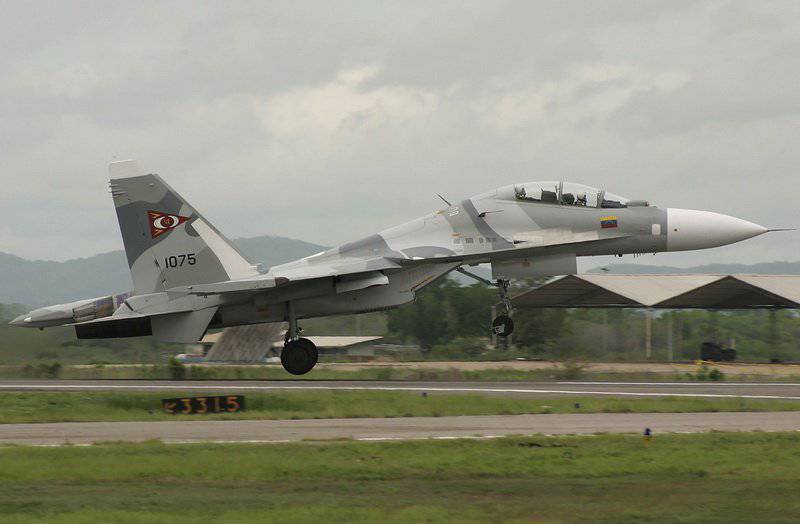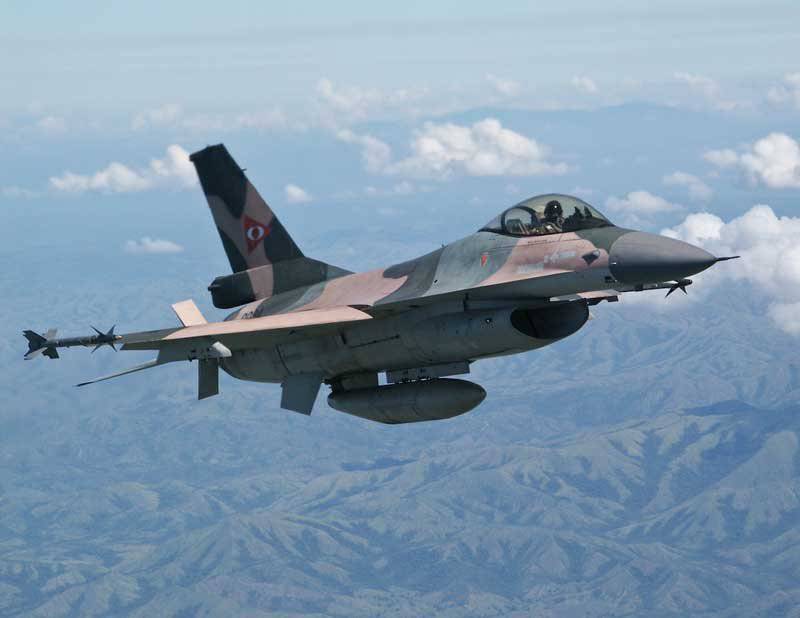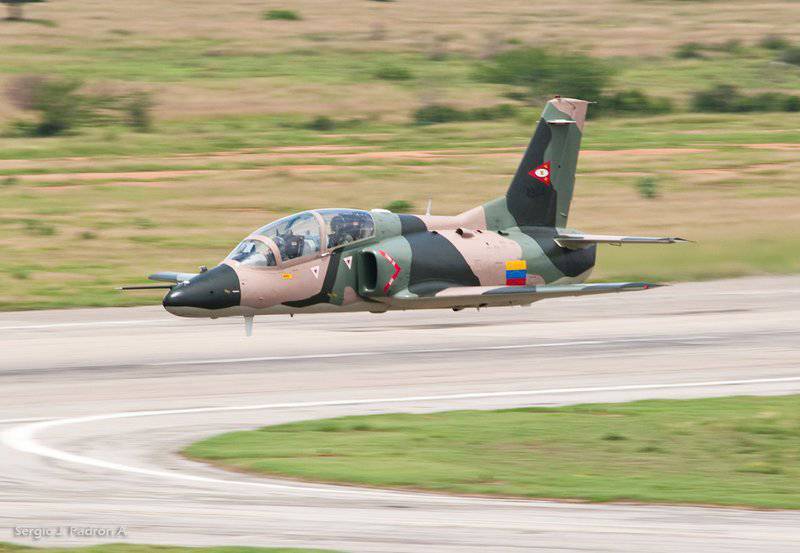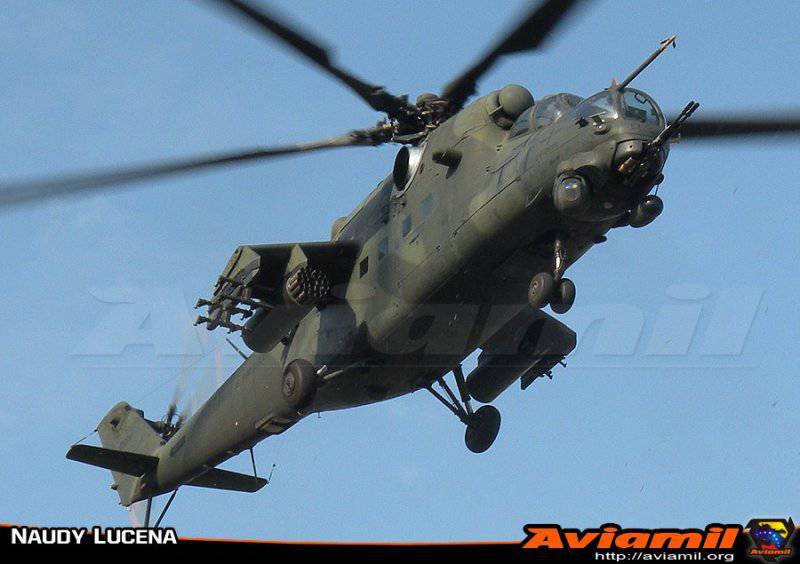Venezuelan Air Force
One of the aggressive manifestations of such a policy was the cessation of the supply of spare parts to Venezuela and aviation American-made technology. For a country whose main fleet until the mid-2000s was Western-made aircraft, this was a fairly tangible blow. After the suppression of the right rebellion in Venezuela in April 2002, it became completely clear that the West would try to overthrow the patriotic government of Hugo Chavez at all costs. For this reason, and also because of the sanctions imposed against Venezuela, the country changed the vector of its military purchases. In 2006-2009, Venezuela signed a number of military contracts for the supply of aircraft with Russia, China and Brazil.
Reforming the country's air force has become a real problem for the Chávez government. Generals, who underwent military training in the United States, were removed from the posts of the Supreme Command of the Air Force, and new military personnel who support the revolutionary nationalist views of the state’s leader were called up for army aviation. Back in 2005, a case occurred in Spain with the “leakage” of documents of the NATO operational staff plan, which was directed against Venezuela and was called Operation Balboa. This plan of NATO provided for the delivery of massive air strikes against Venezuela from the territory of the Dutch Antilles, which are only a few dozen kilometers away from Caracas, the capital of Venezuela. In recent years, the US Army has deployed in Latin America a whole network of its military bases that allow you to control almost the entire territory of the continent. US bases are deployed in Honduras, Panama, Paraguay and Colombia.

Given this, Venezuela has been actively updating its fleet. Currently, its basis and the main striking power of the country's air force are the 24 of the Russian Su-30MKV fighter (the Su-30MKV is a version for Vietnam). Also in service with the Venezuelan Air Force is the X-NUMX F-21A fighter, which was delivered to the country as early as 16-1983, of which about 1985 machines are in combat status. Also in service with the Air Force is from 12 to 4 Canadian fighters CF-10 / V "Tiger", which are a licensed copy of the American fighter "Northrop F-5 Freedom Fighter".
The training aviation, which can also be used as light attack aircraft, is represented by the Embraer EMB 19 “Tukano” Brazilian-made training aircraft (a total of 312 aircraft has been ordered), 32 Hongdu K-18W Karakorum Chinese production aircraft (ordered more 8 machines). The Air Force also has a small number (up to 22 units) of American-made Rockwell OV-4A / E Bronco light attack aircraft. Military transport aviation has 10 Russian IL-10MD-76, 90 American C-6H Hercules and up to 130 Chinese transport aircraft Y-8, which are a copy of the Russian An-8.
Helicopter regiments in the Air Force of the Bolivarian Republic are armed with the 38 transport and combat helicopters Mi-17B5, 3 heavy transport helicopters Mi-26Т2 and 10 multi-purpose combat helicopters Mi-35М - all Russian-made vehicles. In addition, the Air Force has X-NUMX helicopters Eurocopter AS-14 Super Puma and Eurocopter AS-332 AC / UL Cougar French production.

The acquisition of 24 heavy fighters Su-30МКV (a variant created special for Venezuela based on the Su-30МК2) Hugo Chavez announced in June 2006 of the year. Shortly thereafter, 2 July 2006, 2 Russian Su-30MK, accompanied by military transport aircraft IL-76, arrived at the El Libertador airbase to demonstrate their qualities to the leadership of Venezuela and the national Air Force. As an escort of honor, they were accompanied by three F-16 fighters and two Mirage aircraft (they were removed from service in the 2009 year).
During the visit, the Russian Su-30MK conducted a series of demonstration air battles to assess their flight data and armament. In training battles, they fought Mirage 50 and F-16. Especially bright were the training battles with six F-16 fighters, and then with six Mirage 50, which were conducted to demonstrate the capabilities of the Russian H-011ВE radar. 14 July 2006, both fighters returned to Russia, and 28 July countries signed a bilateral contract for 1,5 billion dollars, which included not only the supply of aircraft, but their maintenance, supply of spare parts and weapons, as well as training of flight personnel.
Currently, the Venezuelan Air Force is fully satisfied with the quality of the Su-30 fighters delivered to the country. This was reported in particular by the media referring to the chairman of the Bolivarian Civil-Military Front, retired lieutenant colonel Hector Hererr. According to him, all Russian fighters purchased by Venezuela are functioning perfectly. Also Herrera stressed that although the Su-30MKV and are not 5-generation aircraft, but they are excellent in their combat capabilities and flight performance.
Taking into account the composition of the Venezuelan Air Force, it can be assumed that if the United States and its allies try to realize any air expansion against Venezuela, it will end in victory for the aggressor, but will be accompanied by a large number of losses. Especially if Venezuela continues to buy new aviation equipment from Russia and the PRC. Moreover, if Hugo Chávez would have supported all of Latin America, the chances of success in a hypothetical fight with the United States would be much more weighty. Considering that Argentina, Brazil, Uruguay and a number of other Latin American countries are trying to pursue an increasingly independent foreign policy and are leaning towards the left course, this is not so unrealistic.
The whole question is what level of losses the opponents of Hugo Chávez are ready to take in order to achieve his overthrow. The Venezuelan goal for the West looks too tempting, especially for the United States, which hopes to gain access to Venezuelan oil, eliminate the communist threat and deprive Russia of its strategic ally in the region. Such a goal justifies any means.
Today, Venezuela is for Russia one of the strategic partners and a major exporter of Russian weapons. At present, negotiations are underway at different stages on the possible delivery to Venezuela of Su-35C fighters, sea patrol aircraft based on passenger IL-114, Be-200 amphibious firefighter aircraft, Mi-28H attack helicopters and Asant light multi-purpose helicopters.
Cooperation with China
At present, Venezuelan air forces are counting on acquiring the 2 Squadron of Chinese Hongdu K-8W Karakorum training and combat aircraft, President Hugo Chav has made a statement. Venezuela has already received 18 of such aircraft and expects to acquire more 22 machines. The total transaction value is approximately 82 million. Venezuela acquired the first batch of K-8W back in 2008, the first 6 aircraft were transferred to the country's Air Force in March of the 2010 year. The rest of the aircraft were delivered to the country during the 2011 year. In addition to the aircraft itself, Venezuela also acquired ground equipment for their maintenance in China.

By acquiring data from training aircraft of the Venezuelan Air Force, they expect to fill the shortage of training aircraft, which arose after the cancellation of the American aircraft Rockwell T-2D Buckeye. K-8W Karakorum training aircraft are able to accelerate to 800 km / h and fly to 2 200 km. In the combat version, these machines can be equipped with an 23-mm cannon, in addition to this, the aircraft has 5 suspension points for bombs, missiles and discharged suspended fuel tanks.
In addition, the country's Air Force purchased the 8 medium-sized Shaanxi Y-8 transport aircraft in the PRC. Their deliveries began in 2012. Representatives of the country's Air Force Command noted that the purchase of Chinese tactical transport Y-8 will be an incentive for further cooperation between the countries. In addition to the airplanes already listed, Venezuela received from China 10 mobile radar and is negotiating the possibility of supplying multi-purpose Chinese J-10 fighter jets.
Information sources:
-http: //pravoslav-voin.info/publikacii/3229-aviacionnyj-kulak-venesuyely.html
-http: //www.automan.kz/171691-venesujela-kupit-vtoruju-jeskadrilju-kitajjskikh.html
-http://periscope2.ru/2011/04/20/2842/
-http: //ru.wikipedia.org

Information